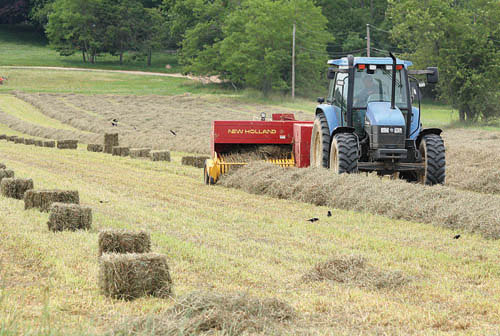Farmers: $15 minimum wage is too much

A proposal by Gov. Andrew Cuomo to eventually increase the state’s minimum wage to $15 an hour — a 66 percent increase from the current rate — has members of the agriculture industry on edge.
“That would put us at a huge disadvantage,” said Jeff Rottkamp, owner of Fox Hollow Farm on Sound Avenue. “A monstrous disadvantage.”
Increased minimum wage, logically, means increased labor costs for farms. In order to keep up with this change, farmers would be forced to either raise the cost of their products or take a loss in profits in order to keep prices similar for the consumer, Rob Carpenter of the Long Island Farm Bureau said.
“It would hurt our local economy,” Carl Gabrielsen, of Gabrielsen Farms, said of the proposed wage hike. “It would make the cost of produce go up. A lot of farmers on Long Island — their margins are razor thin.”
The proposal, suggested in last week’s State of the State speech, implies that by paying the current minimum wage, many full time employees are still under the poverty line, which makes them also eligible for welfare and food stamps — burdens that fall on taxpayers as opposed to the companies that employ them.
Pointing to larger corporations such as McDonald’s that frequently pay minimum wage, “It is corporate welfare at its worst,” the governor said.
But Steve Ammerman, public affairs manager at the New York Farm Bureau, said farm employees currently make around $12 an hour on average, which is $3 over minimum wage. Mr. Rottkamp said labor is one of the highest costs for a farmer. He added that as minimum wage rises, all labor costs would increase because people will want to continue to make a proportionate amount above minimum wage.
Both Mr. Carpenter and Mr. Ammerman assured that a recent minimum wage increase to $9 per hour — also championed by Gov. Cuomo — doesn’t negatively affect the industry. But since increasing from $9 to $15 is “more substantial,” that’s where the problem arises.
“It is very difficult, especially with the additional increases over the last number of years in the cost of owning a farm, the cost of additional products going up, the cost of insurance going up and the cost of supplies going up,” Mr. Carpenter said. “All of these things put pressure on a farmer’s bottom line because all increases come out of the farmer’s pocket.”
In a study done by the United States Department of Agriculture Economic Research Service (USDA ERS), farmers in New York State spent $746 million on labor in 2014 and net cash income for agriculture was $2.2 billion that year. Changing the minimum wage from $9 to $15 would increase labor costs by half a billion dollars, which is 25 percent of the total income made in 2014.
Another problem farmers would face is competing with other states who would have noticeably lower minimum wages and therefore lower labor costs, allowing them to charge less for their products, Mr. Carpenter said.
“When the farmers compete in a regional marketplace and you have farmers in Pennsylvania being able to sell more product into that market at a cheaper price than New York farmers can, that’s going to definitely put us at a disadvantage,” Mr. Carpenter said.
Mr. Gabrielsen speculated that if minimum reaches $15, people would most likely begin to purchase more goods from other nearby states, such as Pennsylvania, Connecticut, Massachusetts and New Jersey since produce sales is a global market.
According to the USDA ERS, Pennsylvania’s minimum wage is $7.25 and New Jersey’s is $8.38. Connecticut’s is currently $9.15 an hour and Massachusetts is $9 but will raise to $11 by 2017, according to the National Conference of State Legislators.
As the price of land and other goods have increased as well in the area, Suffolk farmers have already reported in recent years that their bottom lines have been affected.
In the spring of 2014, a census by the USDA — which was voluntary for farmers — reported that local farmers’ losses jumped by nearly 70 percent in 2012, compared to losses reported in 2007 on average. Numbers showed that nearly half of Suffolk County’s farmers experienced average losses of close to $125,000 in 2012, compared to about $75,000 five years earlier.
The biggest expenses attributed at the time were labor and fuel.
In an effort to combat the wage increase, the Farm Bureau has started a petition on their E-lobby website urging local government to “take action” in a way that’s beneficial for the agriculture industry. One of numerous pledges on the website is dedicated to opposing the $15 minimum wage.
The Farm Bureau is also part of a minimum wage reality check coalition, Mr. Ammerman said, which contains people from other industries, such as tourism and construction. Here, members work to reach out to their local lawmakers and inform them of the negative aspects this wage hike will cause.
“It’s not a matter of them not wanting to pay [workers] more,” Mr. Ammerman said. “The question is, can they pay more?”








